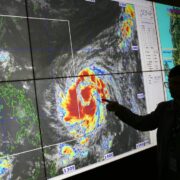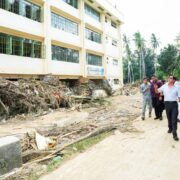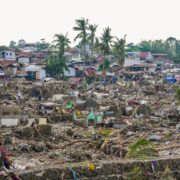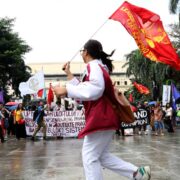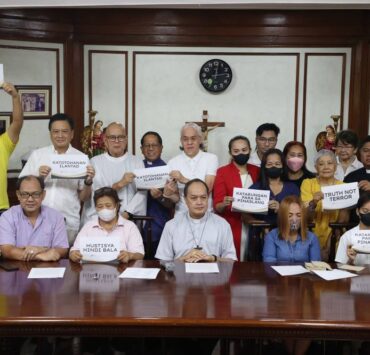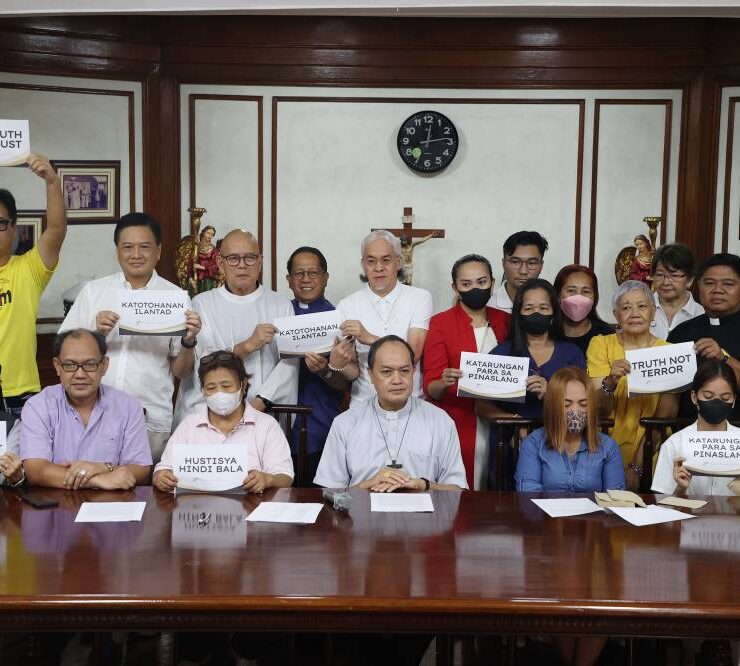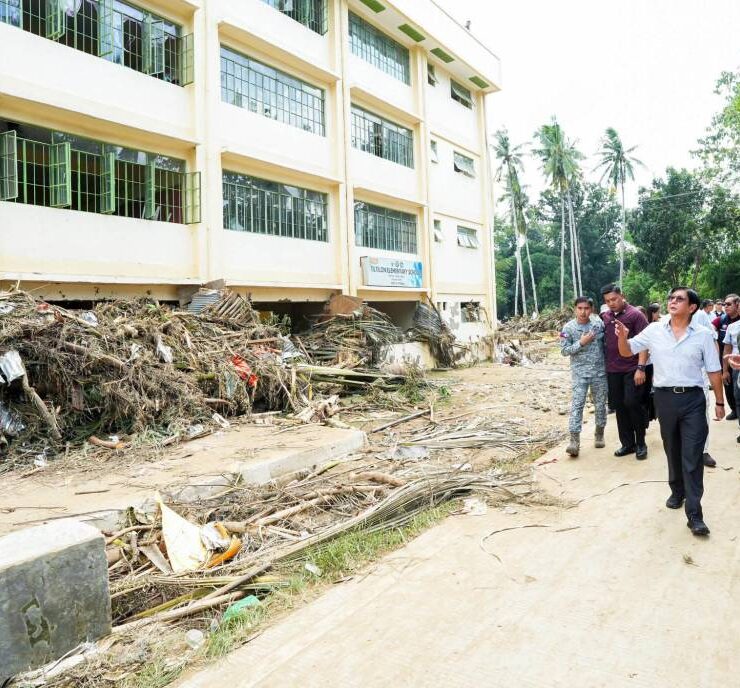Batanes to Bohol: ‘Uwan’ seen to impact most of PH
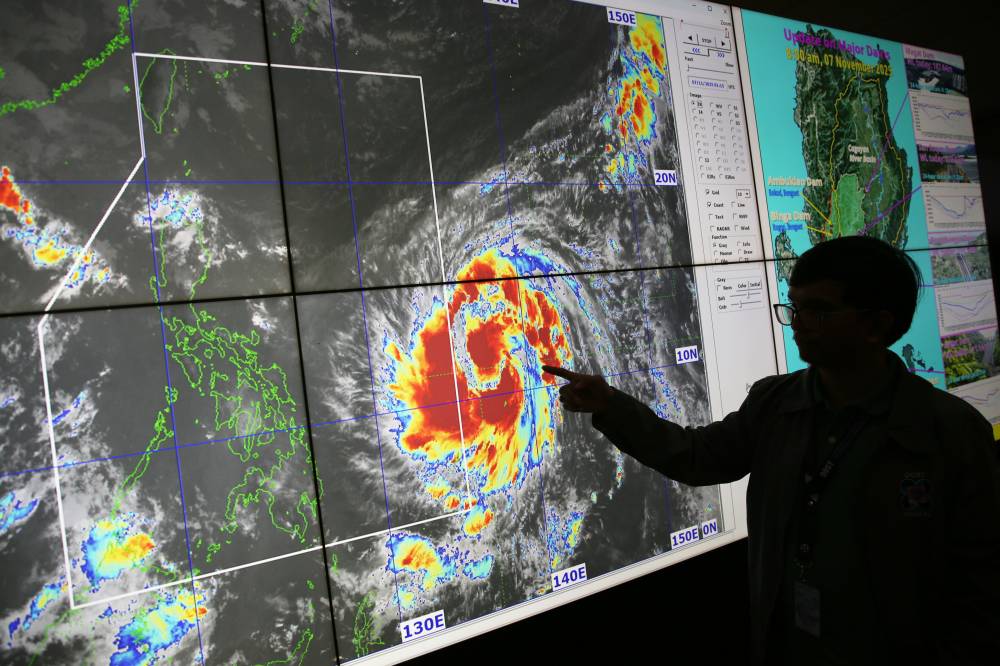
The adverse effects of Severe Tropical Storm “Uwan” (international name: Fung-wong), which is projected to develop into a supertyphoon over the weekend, will be widespread, authorities said on Friday.
The impact will span from Batanes in northern Luzon to Bohol in the Visayas and could affect around 8.4 million people.
Local governments have started mobilizing to prepare for Uwan, which slightly intensified on Friday afternoon, according to the latest forecast from the Philippine Atmospheric, Geophysical and Astronomical Services Administration (Pagasa).
In its Tropical Cyclone Bulletin No. 1 issued at 5 p.m. Friday, the state weather bureau has raised Tropical Cyclone Wind Signal No. 1 in 21 areas in Luzon and the Visayas, even before Uwan has entered the Philippine area of responsibility (PAR).
Track
The storm comes on the heels of Typhoon “Tino” (Kalmaegi) which battered through the Visayas and parts of southern Luzon and northern Mindanao in the past week, killing at least 188 people in its wake.
Office of Civil Defense (OCD) Assistant Secretary Rafael Alejandro IV described Uwan as “very big [that] could have an effect from Batanes to Bohol.”
Pagasa has raised Signal No. 1 over the southeastern portion of Quezon, eastern portion of Romblon, Camarines Norte, Camarines Sur, Catanduanes, Albay, Sorsogon, Masbate, Northern Samar, Eastern Samar, Samar, Biliran, Leyte, Southern Leyte, northern and central portions of Cebu, northeastern portion of Bohol, northern portion of Negros Occidental, northeastern portion of Capiz, northeastern portion of Iloilo, Dinagat Islands, and Surigao del Norte.
These areas could experience strong winds of 39 to 61 kilometers per hour within 36 hours.
Uwan was forecast to intensify into a typhoon-category cyclone by 2 a.m. Saturday. Pagasa’s forecast track showed that it will eventually turn west-northwestward and head for Isabela province.
By Sunday morning, Uwan would have intensified already into a supertyphoon. Pagasa said the cyclone may reach its peak during that time, packing maximum sustained winds of 185 kph near the center, while it is 305 km east of Virac, Catanduanes.
It is expected to make landfall over Isabela province or northern Aurora between Monday morning and Monday afternoon.
“Uwan will move generally westward in the next 24 hours, then west-northwestward for most of the forecast period. On the track forecast, this tropical cyclone is forecast to enter the PAR tonight (Friday) or tomorrow (Nov. 8) early morning,” Pagasa said.
“Furthermore, Uwan is forecast to make landfall over the southern portion of Isabela or the northern portion of Aurora on Sunday (Nov. 9) late evening or on Monday (Nov. 10) early morning. After landfall, Uwan will traverse the mountainous terrain of northern Luzon and emerge over the West Philippine Sea on Monday morning or afternoon,” it added.
Passing over Luzon’s mountainous areas was projected to weaken Uwan, as it may emerge over La Union’s waters as a typhoon category cyclone.
Areas of concern
At a press briefing at Camp Aguinaldo in Quezon City, OCD’s Alejandro said preparations were under way in almost the entire Luzon and the Visayas, with local government units (LGUs) reminded to implement preemptive measures.
“Our areas of concern are really northern Luzon—Regions 1 (Ilocos), Cordillera … 2 (Cagayan Valley), 3 (Central Luzon), 4 (Calabarzon and Mimaropa), 5 (Bicol). This storm is very big. It may even reach … Regions 6 (Western Visayas), 7 (Central Visayas) and 8 (Eastern Visayas). We are preparing basically the entire Luzon and the Visayas for the possible impact of Uwan,” he said.
Alejandro urged residents in low-lying and coastal areas to evacuate early, warning that the system may bring intense rainfall, strong winds, and possible storm surges.
The Department of Environment and Natural Resources-Mines and Geosciences Bureau (DENR-MGB) identified 8,164 barangays nationwide as susceptible to flooding and rain-induced landslides, including 1,944 in Cagayan Valley, 1,523 in Calabarzon (Cavite, Laguna, Batangas, Rizal and Quezon) and 486 in Eastern Visayas.
“Our countrymen should not just move to their homes, especially those who evacuated because as long as we have ground saturation, there is a possibility of a landslide in their area,” said Karlo Queano, chief of the Lands Geological Survey Division of the DENR-MGB. “Let’s wait for advice from the LGU before we return to our homes.”
The Department of Social Welfare and Development said its predictive analytics indicated that Cordillera, the Ilocos, Cagayan Valley and Central Luzon would be among the hardest hit.
It has prepositioned 2.04 million family food packs, 314,000 nonfood items, and 91,000 ready-to-eat food items across its field offices, backed by over P2.7 billion in standby funds and stockpiles nationwide.
DepEd preparation
The Department of Education Disaster Risk Reduction and Management Service (DepEd-DRRMS) identified more than 24,000 schools nationwide at risk from flooding and landslides.
Several LGUs have already announc ed class suspension or a shift to alternative learning modes as early as Friday, in anticipation of Uwan’s onslaught.
DepEd’s hazard mapping found 11,968 schools in 120 divisions vulnerable to flooding, and 12,747 schools in 110 divisions at risk of rain-induced landslides. The most exposed regions include Cagayan Valley, Central Luzon, Calabarzon, Bicol, Western Visayas, Central Visayas, Eastern Visayas and Cordillera.
The agency urged all school division o ffices to activate their DRRM teams, preposition emergency supplies, and coordinate with local disaster councils. Schools were also reminded to protect learning materials and equipment and prepare contingency plans for class disruptions.
Police deployment
The Philippine National Police said it was balancing relief operations in areas battered by Tino and preparations for Uwan.
“I have instructed regional offices to assess and determine the deployment of police officers so that we can also prepare in the areas that will be hit by the incoming cyclone,” acting PNP cief Lt. Gen. Jose Melencio Nartatez Jr. said in a statement.
“We need to balance this so that we still have deployment in the areas where humanitarian assistance is ongoing. Support is still needed, especially in areas devastated by Tino,” he added.
Nartatez also instructed regional commanders to account for available assets, such as rescue vehicles, communications equipment, and logistics supplies to ensure these can be repositioned quickly between relief and high-risk zones.
The police are also keeping watch for possible looting in areas affected by Tino, he added, warning that lawbreakers will face “zero tolerance.”
Uwan is the 21st tropical cyclone to hit the country this year.
The Philippines is typhoon prone as it lies within the western Pacific Typhoon Belt, or a region where warm ocean waters and moist tropical air create ideal conditions for tropical cyclones to form. —REPORTS FROM GABRYELLE DUMALAG, JOHN ERIC MENDOZA, MARY JOY SALCEDO, JOANNA ROSE AGLIBOT, MA. APRIL MIER-MANJARES, VILLAMOR VISAYA JR., ARMAND GALANG, VINCENT CABREZA, HAZEL P. VILLA AND GABRIEL PABICO LALU




